Yesterday, I did a pair of dives to the Chester Poling, which is the stern half of a coastal oil tanker that sank off of Gloucester Harbor in 1977. Paul Adler of East Coast Divers, who was one of the first divers to dive the wreck when it first sank, led the trip.
The Poling broke in two during a winter storm. The bow section sank in about 200 feet of water, and is seldom visited, but the stern section drifted inshore and finally sank right outside the harbor in about 55 feet of water. All but one of the crew were saved. During the Blizzard of ’78, the stern was pushed about 100 feet downhill and now sits in about 100 feet of water, with the top of the deck at about 75 feet, and is a very popular dive site. Paul told us that right after the blizzard, you could see the path plowed into the bottom that the wreck had made as it moved.
When I heard the forecast for yesterday morning, I’d been dreading the dive, because I figured it would be very cold out in the boat, especially between dives, but it wasn’t that bad. It was chilly, but not unbearable. The dives themselves were very rewarding, because the ship has become an artificial reef, covered with all sorts of marine life.
I was buddied up with Max Konig, who I’ve dived with before and respect. Neither of us were equipped for wreck penetration, so we agreed to mostly stay on the outside of the wreck. The Poling is a deep dive, so you have to watch your air consumption carefully.
For both dives, we did a backroll off the side of the boat, swam to the mooring, then followed the mooring line down to the wreck. The line is tied to the stern of the wreck, where there are some cylindrical vents, some equipment, and then you encounter a catwalk leading forward to the break. The catwalk is covered with sea life, and is swarming with small fishes hovering all around it. For both dives, we started at the stern, looked around a bit, and then headed forward along the catwalk.
First Dive
For the first dive, I was struggling with the camera a bit– the strobe was blasting out the pictures until I lowered the ISO back down to 100. Visibility wasn’t great, and it took a little bit of hunting to find the catwalk, since it’s been a while since I’d been there. I was probably a little more absorbed by the camera than I should have been. I found a sea robin just resting on the step of a ladder. Once we arrived at the break, Max poked around a bit slightly inside the break while I took pictures around the edges, and then it was time to head back. Along the way, Max opened up a clam or sea urchin, and fed the fishes; the started swarming around him like St. Francis of Assisi. When we got back to the upline, I had a major leg cramp right at the mooring line; fortunately I was able to hand over hand back to where buoyancy started taking over.
Second Dive
I nearly bailed on the second dive due to the leg cramp; eventually I was able to walk it off until I felt I could get by. A good thing I did; I think the second dive was much better overall. We followed the same basic plan, but I had a better idea of the geography of the wreck, and got better pictures. Max did the fish-feeding thing again; it took a few moments for the fish to overcome their fear, and then they were swarming again. I poked my head into a hatchway at one point, and Max actually popped into one as we were heading for the mooring line.
Pictures
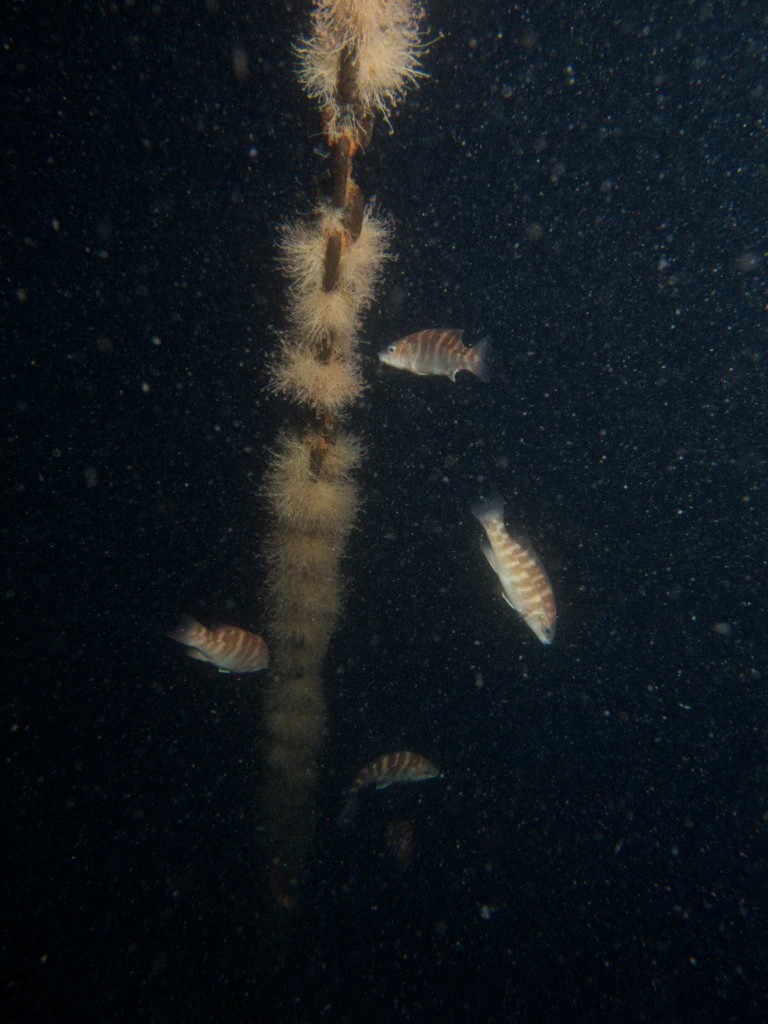
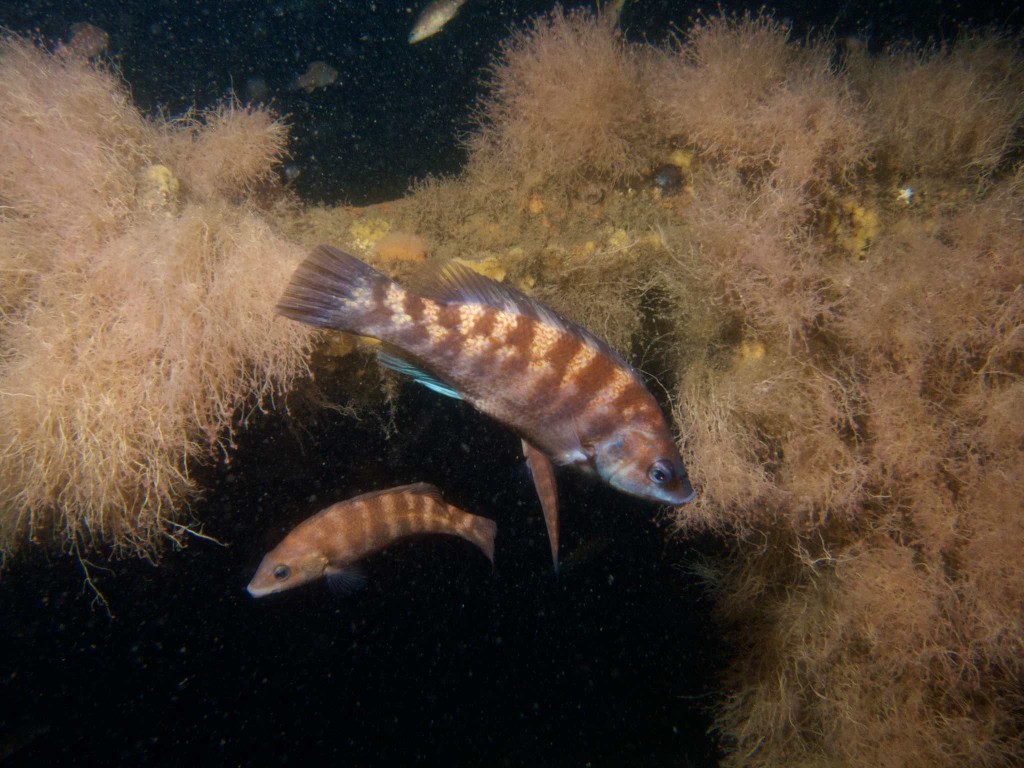
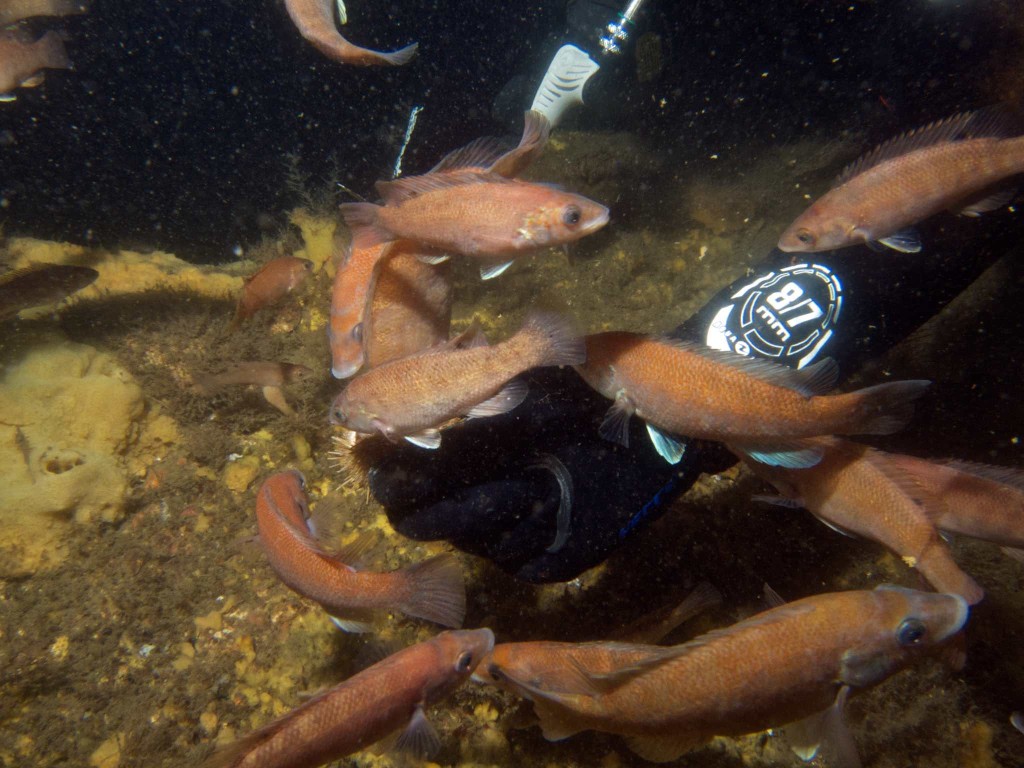
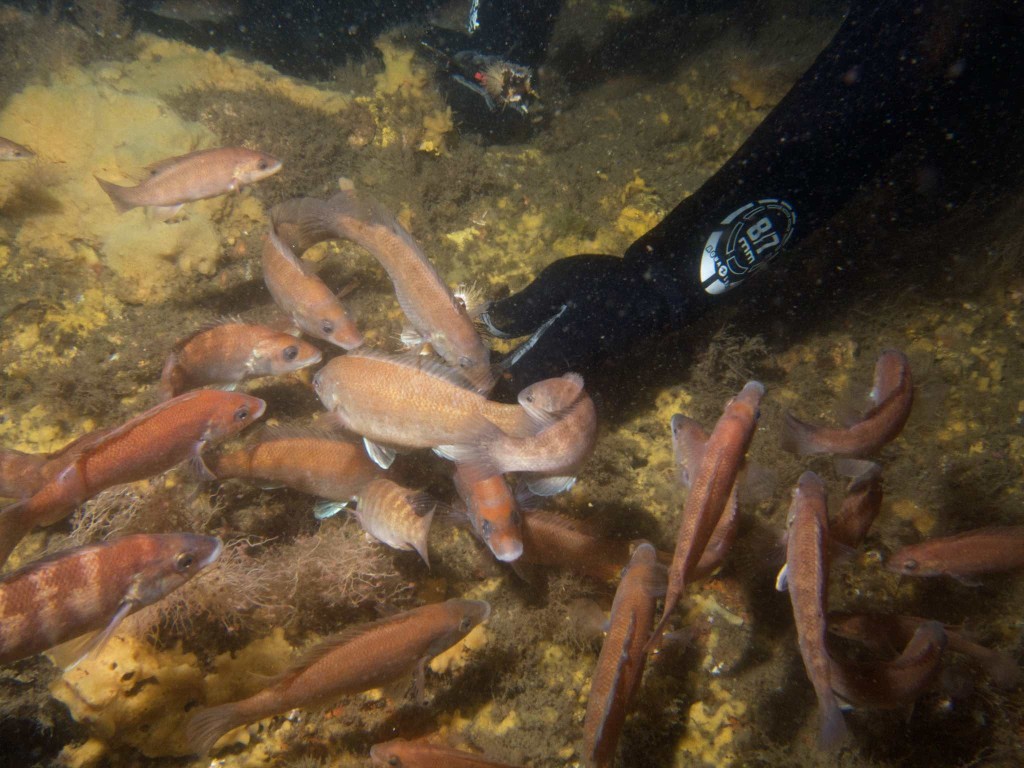
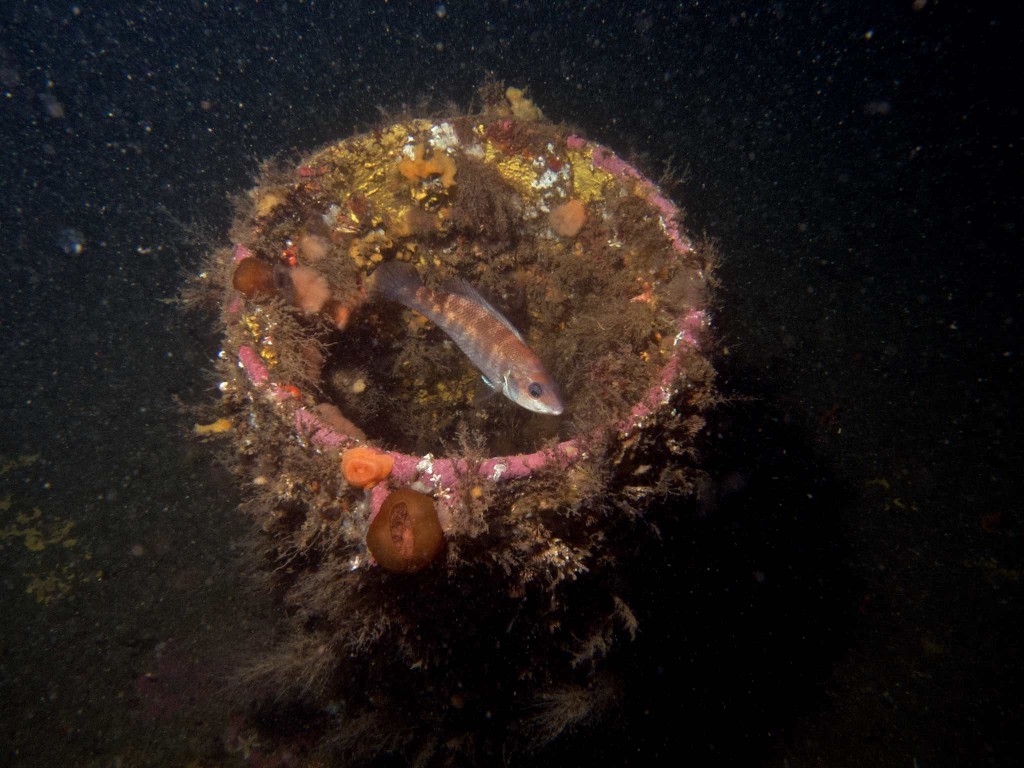
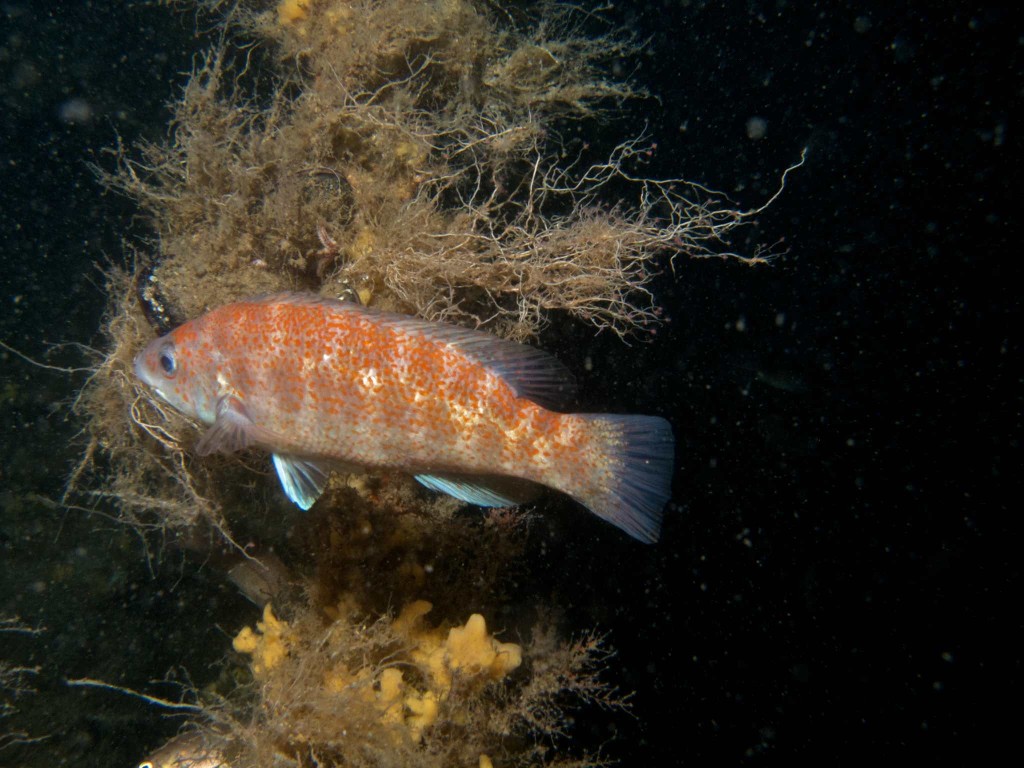
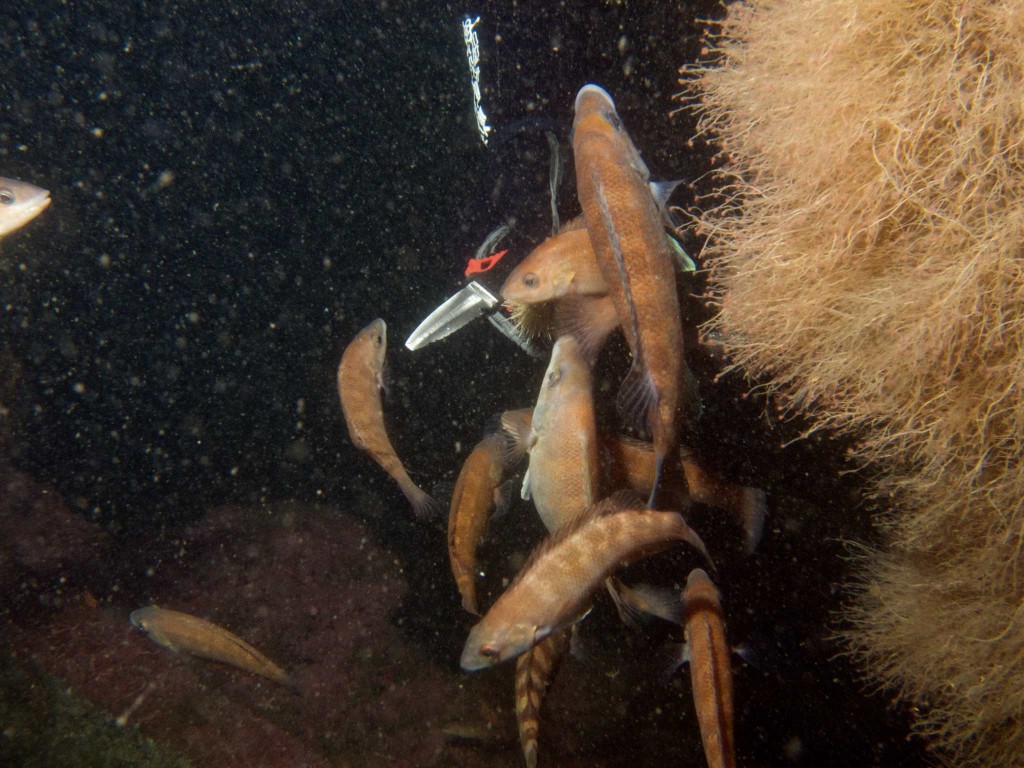
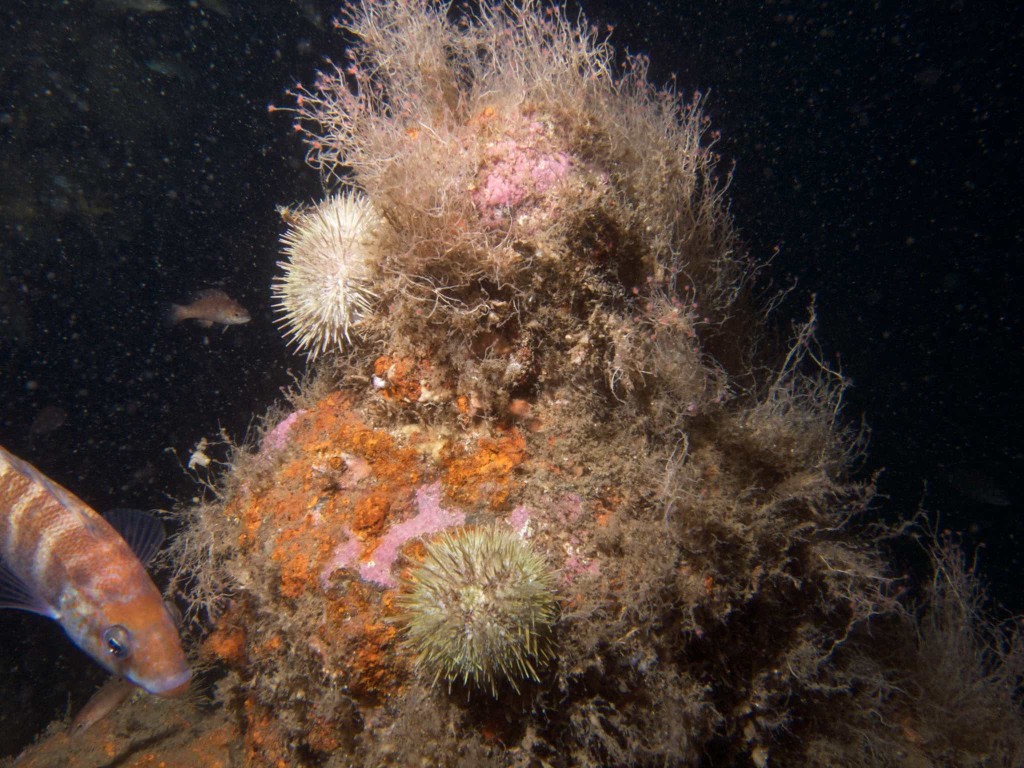
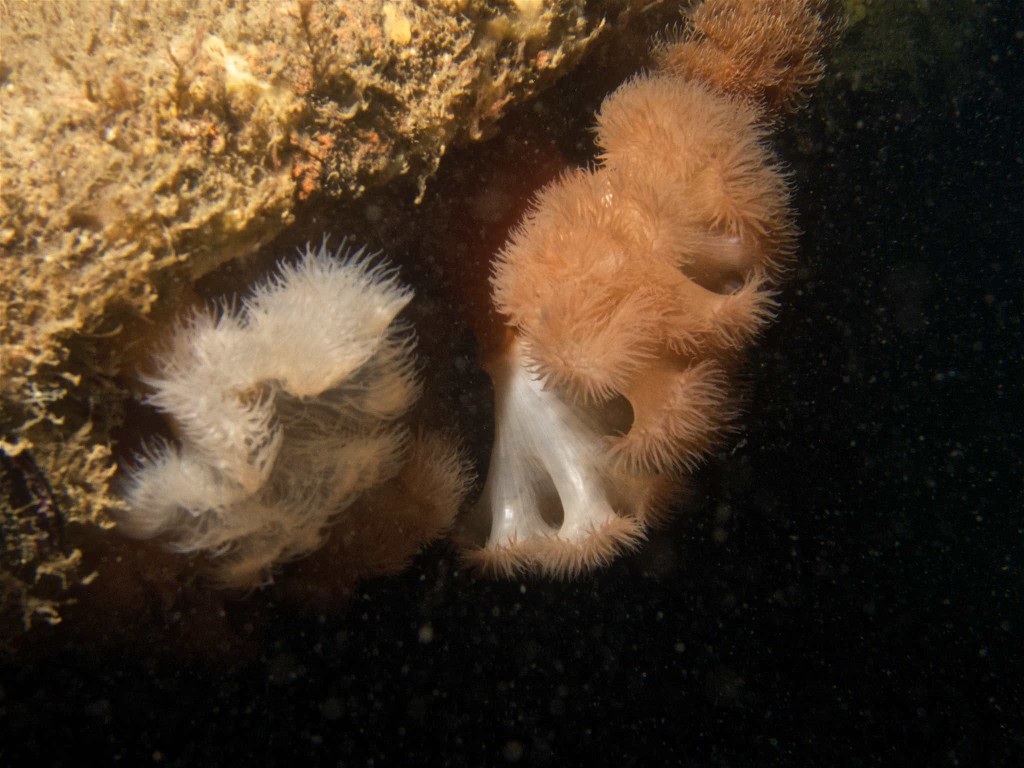
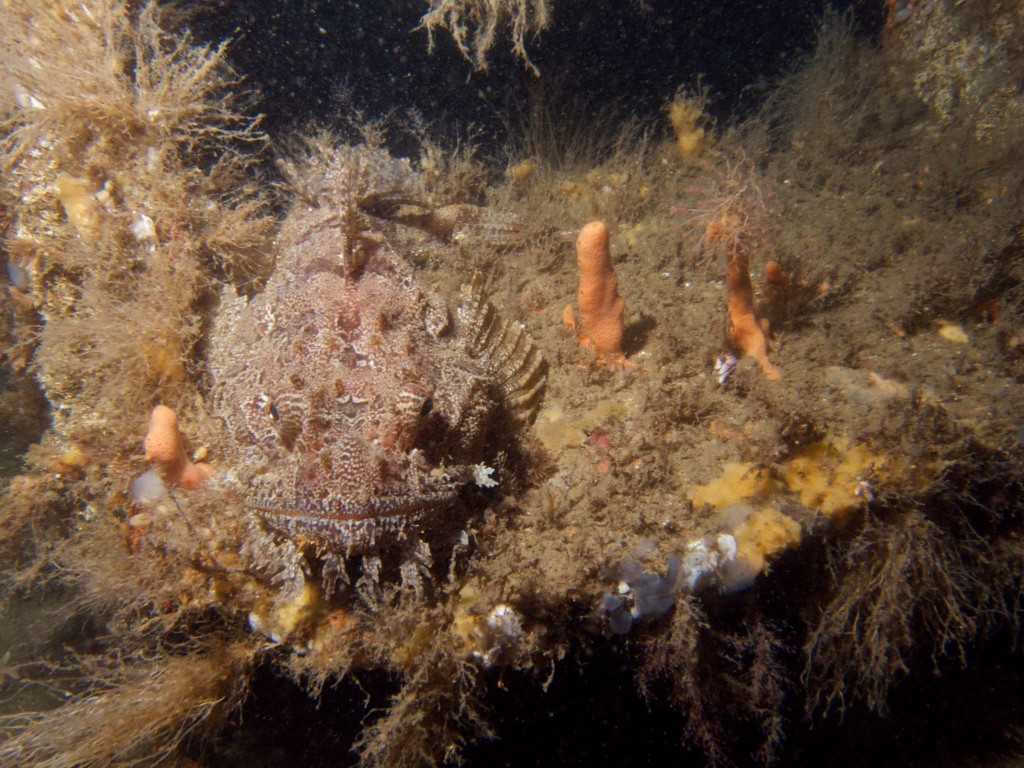
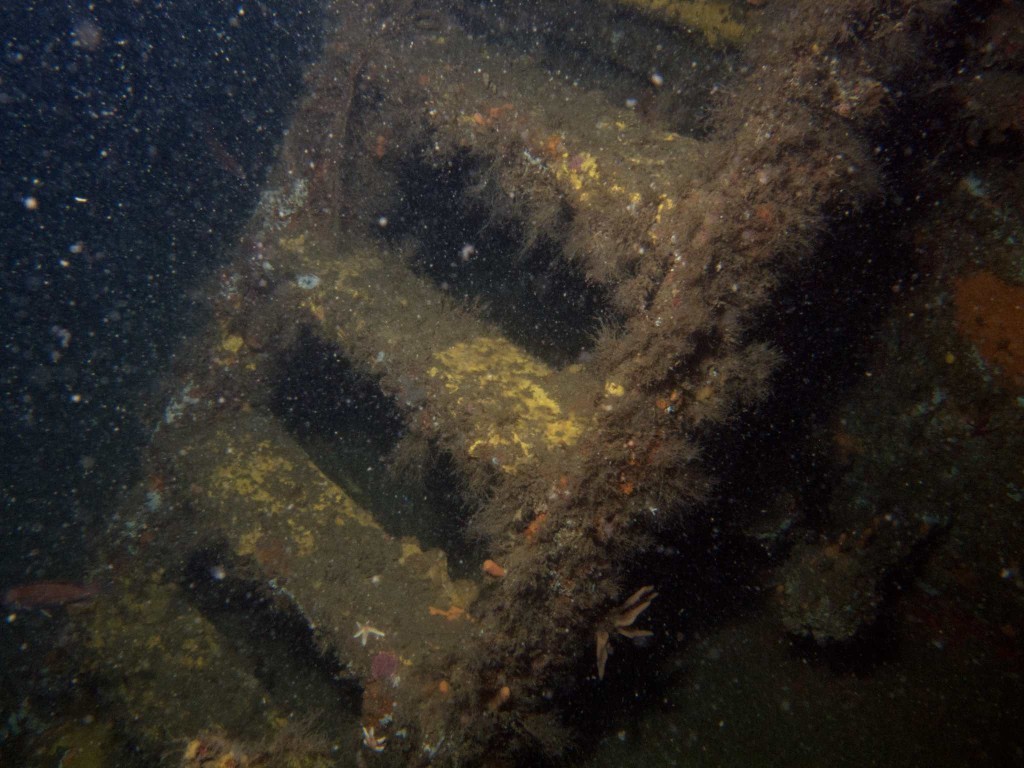
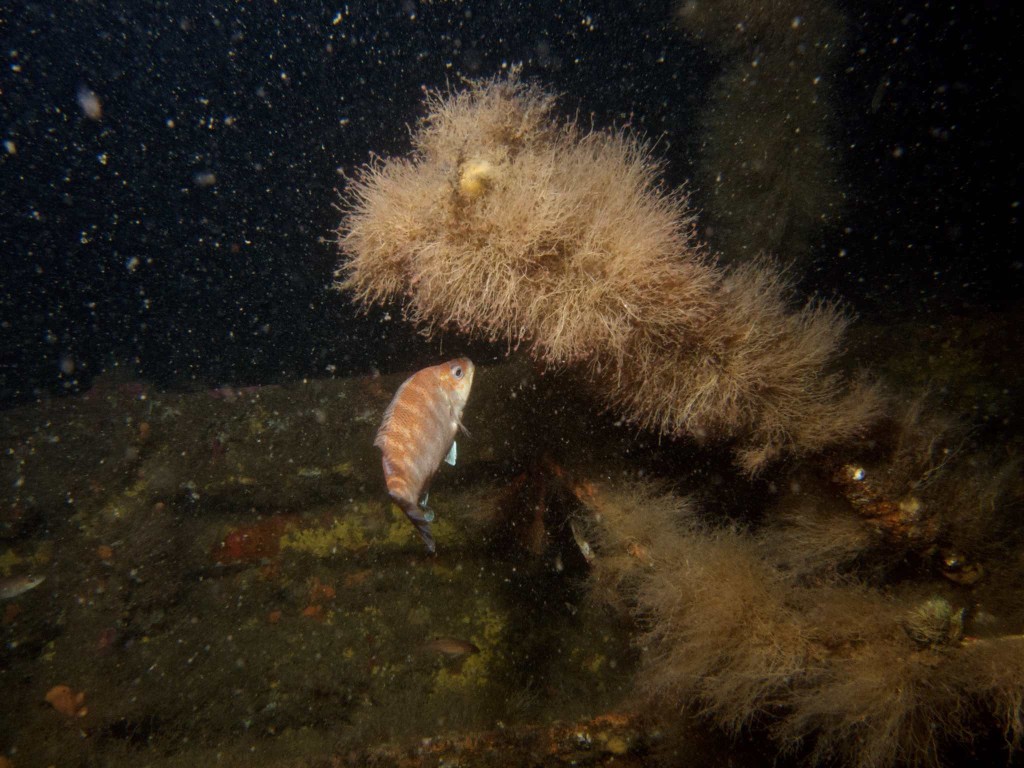
Dive Data
I wear a Sensus dive data recorder on my BCD when I dive; it records the depth and temperature over the course of the dive, which I can then download to my computer. I know a lot of dive computers do this too, but most are not Mac-compatible, which the Sensus is. I’ve had a couple of people ask about it this year, so I’ve attached a depth and temperature plot from the first dive. (Apple Preview or Adobe Acrobat required.)
